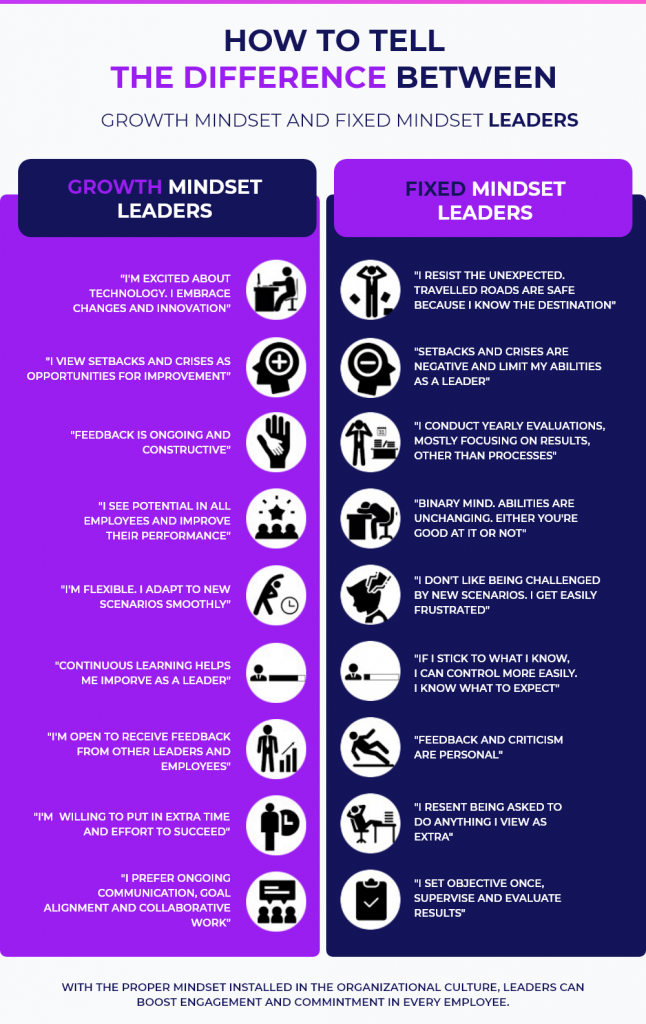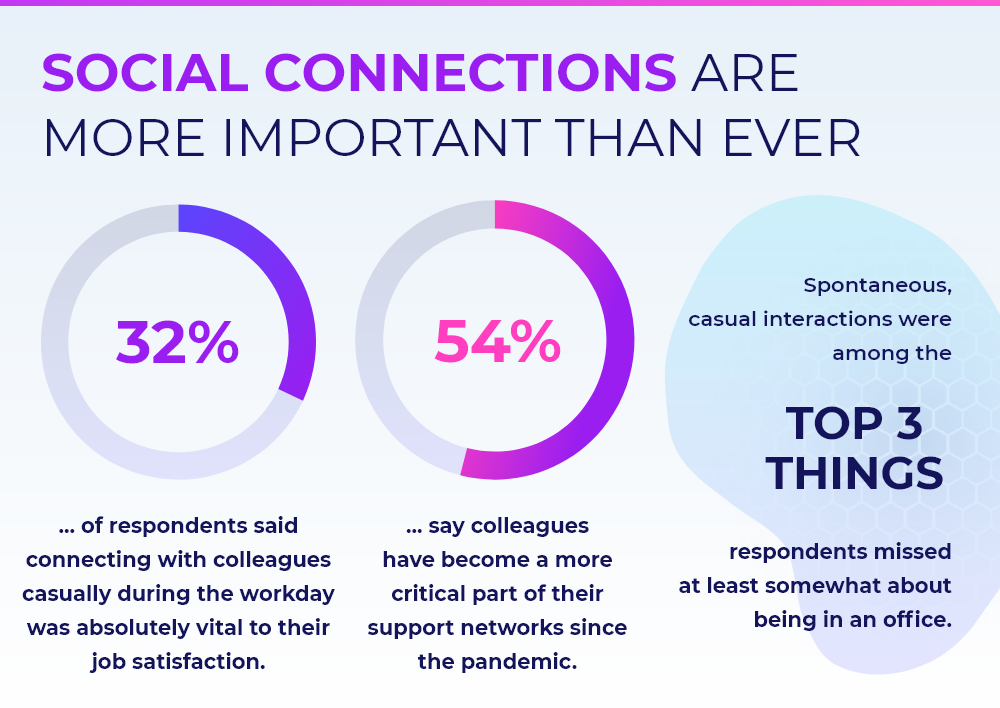How to be a good leader? A Growth Mindset is the key
Written by: María Eugenia Raffaele
Especially in times that require rapid adaptive response, decision making and effective management, the question over how to be a good leader is more recurrent than ever.
Living up to every day changing demands certainly represents a great challenge for leaders, particularly those working with hybrid models. However, if you look behind the curtains of any successful company, you will find a people-centered culture and great leaders with a growth mindset attitude, who can encourage professional development and embrace innovation no matter the circumstances or physical distances.
If you’re wondering how to be a good leader, here are some shooting questions that might pave the way to it:

Your answers to these questions can easily determine whether you have a growth mindset or a fixed mindset attitude in your role. In this article, you’ll find out what it takes to be a good leader and why growth mindset and leadership are so important to ensure successful management and engagement, especially in times of crisis.
Caught by surprise and off-guard in 2020, leaders across all sectors have been forced to respond to both direct and indirect effects of this world crisis making agile decisions and showing a rapidly adaptive response with little time for planning.
Report data shows that leadership will still face 2 great challenges throughout 2021:
- Reconciling with remote work
- Achieving team cohesion and engagement
- People management
Growth mindset leaders and fixed mindset leaders
In this changing context, leaders with a growth mindset attitude will be able to tackle these pressing issues and succeed in their role, while fixed mindset ones are likely to experience change as a burden, feel frustrated and incapable of keeping up with everyday demands. Before we dig deeply into the traits of a good leader, let’s first make the difference between growth and fixed mindsets.

How to be a good leader when it comes to challenges
Leaders play a key role in creating workspaces where people reach their goals and develop professionally. In order to conceive the idea of fully engaged and efficiently communicated employees in a changing scenario with a hybrid working model, it is crucial to find ways to stay close to the people who look to leaders for day-to-day guidance and reassurance. However, leadership qualities don’t stand on their own and, as the saying goes, it takes two to tango. The quality of good leaders should go hand in hand with a growth mindset culture.
Challenge #1 – Reconciling with remote work
One of the leadership attributes most effective modern leaders have is a growth mindset to keep up with the demands of a rapidly changing digital world. In fact, they are eager to embrace innovation and technology to make more agile and effective decisions. Changes and remote work motivate them and they take challenges as possibilities to implement new tools that would help them make the company and their teams grow.
Especially today, organizations aligned with a growth mindset should provide their leaders with technological solutions that allow them to obtain real-time insights on the organization dynamics and visualize relevant data to drive more accurate business strategies no matter where employees are located. Remote leaders need technology to grow their teams and work closely together.
Challenge #2 – Achieving team cohesion.
In 2020, our world was redefined and now, emotional connection is more important than ever to achieve team cohesion. But how can organizations achieve this? Growth mindset leaders find ways to recreate the emotional connections that existed among their people before the pandemic and see disruptive, stressful experiences as opportunities to enhance innovative ways to strengthen bonds among employees.

Research has shown that crises challenge the “if it ain’t broke, don’t fix it” mantra that prevails in many fixed mindset organizations. Great leaders can create new opportunities for people to express their voice and ideas, keep everyone in the loop, work cooperatively and give each other constant feedback beyond their physical location.
One of the key strengths as a leader is the capacity to enhance team cohesion through communication and trust in one another. Growth mindset leaders see Communication and active listening as keystones in distance leadership. Most technology that companies use nowadays are effective for communication and productivity, but are not enough for connecting emotionally. Therefore, organizations should give their leaders the necessary tools to enhance cohesion through digital solutions that allow them to provide ongoing feedback and build a culture of mutual trust where people can establish a strong connection with their workplace, with each other and the organizational culture. That’s what cohesion is all about.
Challenge #3 – People management
When it comes to people management during challenging times, the characteristics of a leader with a growth mindset are the ability to multiply their team’s potential and create a healthy culture where goals are clearly communicated and set together with their teams. Teams need to know what’s expected from them and to feel accompanied along the process. Leaders who achieve this, can accelerate their team’s productivity, and promote enough engagement to overcome any business challenge.
A fixed mindset leader believes that people’s basic qualities and talent are fixed and can’t be changed or developed. Therefore, they micromanage their teams, often leading to a toxic work environment, burnout and stress. A growth mindset, on the other hand, is an attitude where emotional intelligence and empathy are core elements to detect the potential in every individual and make them feel valued. More than ever, leaders need to put all their soft skills into practice every day to improve results, promote trust and prevent uncertainty in their teams. According to the World Economic Forum 2020 Future of Jobs Report, the top trending soft skills leaders should have are:

The role of the organization
As we mentioned at the beginning of this article, leadership qualities should go hand in hand with a growth mindset culture. To put it simply, organizations also need to be open to embrace transformation and provide their leaders with digital tools that would make their experience engaging and productive.
Nowadays, there are many technological solutions for leaders but most of them tend to focus on micromanaging and controlling results other than improving processes and professional development. Truth is there will be moments when results do not meet expectations, so a key part of the growth mindset for leaders is to focus on the process and not just the result. A solution like StarMeUp, for example, allows leaders to provide recognition, align goals with the company’s values, make the most of every employee and increase their commitment, while promoting togetherness and sense of belonging.
To conclude, with the right tools, organizations can make their growth mindset leaders feel like a fish in water. Leaders who count with the technology to make strategic data-driven decisions aligned with the company’s culture can boost people’s potential, making them feel engaged and valued no matter the circumstances.
This year can be an opportunity to develop a growth mindset culture with leaders and teams that can face any challenge with resiliency and excitement. Let’s face the challenge together. We can help you make the most of your leaders!